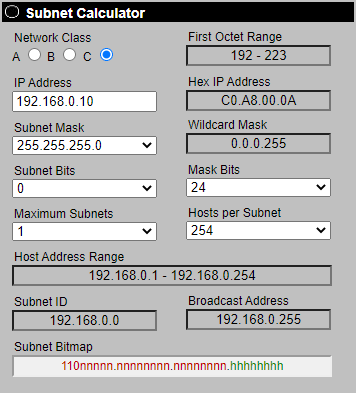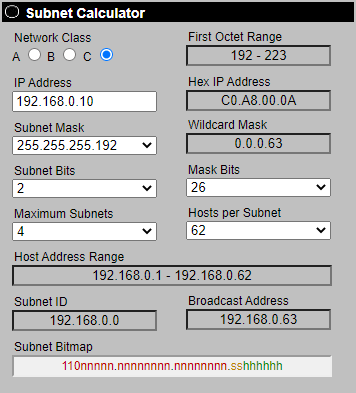
Blog > Automation > Creating a Subet
Creating a Subnet
5/25/21 | Eric Haff, Rexel Technical Consultant

Blog > Automation > Creating a Subet
5/25/21 | Eric Haff, Rexel Technical Consultant
If you are new to networking, it is easy to become overwhelmed by the seemingly endless acronyms and jargon that surrounds you. Do not worry, in time and with enough practice, you will learn to talk the talk and walk the walk. Today I would like to focus on the basic concept of a subnet to give you a better understanding of networking.
A subnet or subnetwork is a logic-driven subdivision of an IP network. When you divide a network into two or more networks, it’s called subnetting.
First, let’s look at IP addresses, the 32-bit unique identifier for a device on a network. People are used to seeing something like 192.168.0.10 and then that 255.255.255.0 in the box underneath. That 255.255.255.0 is the subnet mask. This value defines the network that the corresponding IP address is a part of by breaking down the octets into host and network bits. Sometimes you may see that subnet mask value displayed in CIDR block notation. That would look something like 192.168.0.10/24 for the example above.
To understand what this means, we need to start by breaking down the numbers above into their bits and octets.
Let’s take that example we had earlier: 192.168.0.10
The example above in is dotted decimal notation. This is what it would look like if it were broken into its bit form: 11000000.10101000.00000000.00001010
Now, let’s do the same thing with our subnet mask: 255.255.255.0
This is what it would look like if it were broken into its octets and bits: 11111111.11111111.11111111.00000000
The green numbers are the host bits, and the red numbers are the network bits.
Click Here to Download our FREE ABCs of Industrial Networking eBook

Now that we have our bits for both our IP address and our subnet mask, we can determine four very important things about our network:
You do this manually by using a process called bitwise, but for the purpose of this we will use a subnet calculator:

With this tool we can see that:
Any client that has an IP address between 192.168.0.1 and 192.168.0.254 with a 255.255.255.0 subnet mask will be able to communicate on the network without the need for a router or default gateway.
Let’s look at one more example that has a less widely used IP scheme:

In this example, we are using the same IP address 192.168.0.10, but we changed the subnet mask from 255.255.255.0 to 255.255.255.192
By doing this, we have created four smaller networks! The new range of the network that the address 192.168.0.10 sits on is 192.168.0.1-192.168.0.62. The new broadcast address is 192.168.0.63. And the network address stayed the same (192.168.0.0)!
So, what does this do for us and why is this important? Well, in networking a large portion of the protocols that manage our services are what is known as broadcast traffic. Broadcast traffic is sent to everyone on the network and can become an issue if not managed properly. One cool thing about broadcast traffic is that it does not traverse routers! Therefore, if you limit your subnet to a smaller number of hosts, you limit the amount of broadcast traffic those hosts have to deal with! Industrial automation equipment utilizes a host of broadcast traffic protocols. As we continue to grow the number of devices on our Industrial Automation and Control System (IACS) networks, we will need to manage this traffic and subnetting is the perfect tool.
Are you interested in learning more about subnets? We can help. Contact us today!